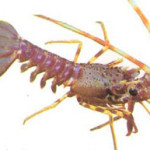
Scombridae
This is a family of fast-swimming, wide-ranging pelagic fishes who are primarily swift predators of open seas. They have a number of special adaptations for this lifestyle, including a streamlined body form and recessible dorsal and anal fins. Some species are partly endothermic, maintaining a higher body temperature in the swimming muscles. Scombrids often swim in schools and prey on other fishes. Many species are very important as sport fishes and in commercial harvest.
The northern bluefin tuna (Thunnus thynnus) is an oceanic fish, but seasonally comes close to shore and is able to tolerate a wide range of temperatures. They school by size, sometimes together with albacore, yellowfin, bigeye, skipjack. They feed on small schooling fishes such as anchovies and hakes, or on squids and red crabs. It is very large species, reaching lengths up to 4.5 metres. The lower sides and belly are silvery white with colourless transverse lines alternated with rows of colourless dots. The first dorsal fin is yellow or bluish; the second reddish-brown; the anal fin is dusky yellow and edged with black There are around fifty individual species within the family, and some of the species that you may see throughout the waters of the region are listed below, along with their maximum adult length.
- Wahoo Acanthocybium solandri 250cm
- Bullet Tuna Auxis rochei rochei 50cm
- Frigate Tuna Auxis thazard thazard 65cm
- Little Tunny Euthynnus alletteratus 122cm
- Skipjack Tuna Katsuwonus pelamis 108cm
- Chub Mackerel Scomber japonicus 64cm
- West African Spanish Mackerel Scomberomorus tritor 100cm
- Albacore Thunnus alalunga 140cm
- Yellowfin Tuna Thunnus albacares 239cm








Social Profiles